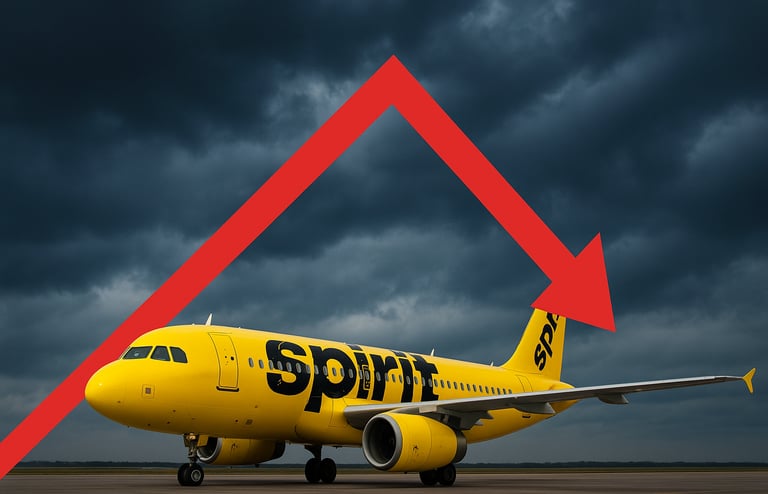Spirit Airlines Faces Financial Uncertainty Months After Bankruptcy Exit
Spirit Airlines warns of possible closure within a year due to weak demand, financial losses, and stiff competition, months after emerging from bankruptcy.
Raja Awais Ali
8/12/20252 min read


Spirit Airlines Faces Financial Uncertainty Months After Emerging from Bankruptcy
Spirit Airlines, the Florida-based ultra-low-cost carrier, is facing significant financial challenges just months after emerging from Chapter 11 bankruptcy protection in March 2025. Despite the court-approved restructuring designed to stabilize the company, Spirit recently disclosed in its quarterly filings that it has “substantial doubt” about its ability to continue as a going concern over the next year. This revelation highlights serious concerns about the airline’s ongoing viability.
The financial difficulties primarily stem from weak domestic demand, especially in the leisure travel sector, combined with an oversupply of available seats. In the second quarter of 2025, Spirit reported a net loss of $245.8 million, following a $143 million loss in the first quarter. These consecutive losses have exerted tremendous pressure on the airline’s cash flow and operational capabilities.
In response to these challenges, Spirit Airlines has implemented several cost-cutting measures, including furloughing approximately 270 pilots and demoting another 140 to conserve cash. The airline is also renegotiating terms with its credit card processor, which has demanded higher collateral reserves and threatened contract termination by the end of the year if conditions are not met. Additionally, Spirit plans to monetize assets such as aircraft, real estate holdings, and airport gate capacity to improve liquidity and meet short-term obligations.
Spirit’s financial struggles are further compounded by the highly competitive U.S. domestic airline market, where established carriers like American, Delta, Southwest, and United dominate. Spirit’s low-cost business model leaves it especially vulnerable in a market influenced by fluctuating fuel prices, regulatory changes, and economic uncertainties. The airline’s ongoing struggle to maintain market share while controlling costs underscores the difficult path ahead.
Looking forward, Spirit Airlines faces a critical juncture. Without securing additional capital or forming strategic partnerships, the airline may struggle to sustain operations beyond the next year. Investor confidence will largely depend on management’s ability to adapt to changing market conditions, manage costs effectively, and restore operational efficiency.
This situation reflects broader challenges faced by low-cost carriers in an unpredictable travel industry still recovering from recent global disruptions. Spirit’s case serves as a cautionary tale about the fragility of airline economics and the necessity of robust financial planning amid shifting consumer behaviors and competitive pressures.
In conclusion, while Spirit Airlines’ emergence from bankruptcy initially signaled hope for recovery, current financial indicators raise serious concerns about its long-term viability. The airline’s future depends on decisive action to address liquidity issues and market challenges, making the coming months critical for its survival.